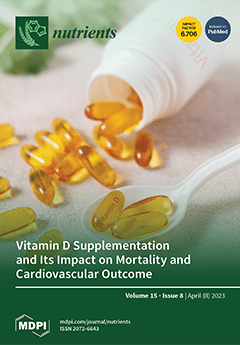Background: The repercussions on oxidative and inflammatory stress markers under the effects of arginine and citrulline in response to exercise are not fully reached. We completed a systematic review to investigate the effects of L-Citrulline or L-Arginine on oxidative stress and inflammatory biomarkers following exercise. EMBASE, MEDLINE (PubMed), Cochrane Library, CINAHL, LILACS, and Web of Science databases were used to record the trials. This study includes randomized controlled trials (RCTs) and non-RCTs with subjects over 18 years old. Those under the intervention protocol consumed L-Citrulline or L-Arginine, and the controls ingested placebo. We recognized 1080 studies, but only 7 were included (7 studies in meta-analysis). We observed no difference between pre- vs. post-exercise for oxidative stress (subtotal = −0.21 [CI: −0.56, 0.14],
p = 0.24, and heterogeneity = 0%. In the sub-group “L-Arginine” we found a subtotal = −0.29 [−0.71, 0.12],
p = 0.16, and heterogeneity = 0%. For the “L-Citrulline” subgroup we observed a subtotal = 0.00 [−0.67, 0.67],
p = 1.00, and heterogeneity was not applicable. No differences were observed between groups (
p = 0.47), and I² = 0%) or in antioxidant activity (subtotal = −0.28 [−1.65, 1.08],
p = 0.68, and heterogeneity = 0%). In the “L-Arginine” sub-group, we found a subtotal = −3.90 [−14.18, 6.38],
p = 0.46, and heterogeneity was not applicable. For the “L-Citrulline” subgroup, we reported a subtotal = −0.22 [−1.60, 1.16],
p = 0.75, and heterogeneity was not applicable. No differences were observed between groups (
p = 0.49), and I² = 0%), inflammatory markers (subtotal = 8.38 [−0.02, 16.78],
p = 0.05, and heterogeneity = 93%. Tests for subgroup differences were not applicable, and anti-inflammatory markers (subtotal = −0.38 [−1.15, 0.39],
p = 0.34 and heterogeneity = 15%; testing for subgroup differences was not applicable). In conclusion, our systematic review and meta-analysis found that L-Citrulline and L-Arginine did not influence inflammatory biomarkers and oxidative stress after exercise.
Full article






